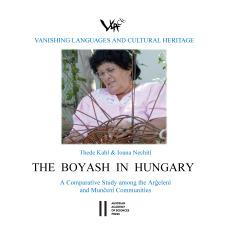Ioana Aminian Jazi (former Nechiti) / Ioana Nechiti / Thede Kahl
The Boyash in Hungary
A Comparative Study among the Arĝeleni and Munĉeni Communities
Reihe: Vanishing Languages and Cultural Heritage (VLACH)Der vorliegende Band beschäftigt sich mit der Sprache und Kultur der “băiaşi” (Bajeschi) in Südungarn. Die von ihnen gesprochenen archaischen rumänischen Dialekte sind vom Aussterben bedroht, wobei die beiden Vernakularsprachen Arĝelean und Munĉan in unterschiedlichem Ausmaß betroffen sind. Das im Dorf Alsószentmárton gesprochene Munĉan befindet sich in der zweiten Phase des Sprachverfalls, in welcher die Minderheitensprache vom dominierenden Ungarischen aus dem Alltagsgebrauch in den häuslichen Bereich abgedrängt wird. Das im Dorf Gilvánfa und in Pécs gesprochene Arĝelean befindet sich in einer dritten Phase, die durch den Abbau des Vokabulars und den Verlust der Wortbildung gekennzeichnet ist – hier wurde die Sprache der Minderheit bereits durch jene der Mehrheit ersetzt. Faktoren wie Lebensumstände, soziale Strukturen, die Intensität des Sprachkontakts sowie ökonomische Abhängigkeit spielen eine entscheidende Rolle in der schrittweisen Ersetzung der Sprache der Boyash durch die Mehrheitssprache. Dieser Prozess spitzte sich in der zweiten Hälfte des 20. Jahrhunderts und insbesondere nach dem EU-Beitritt Ungarns dramatisch zu. In den letzten drei Jahrzehnten hat das Arĝelean gegenüber dem Munĉan an Prestige gewonnen, wodurch es sehr wahrscheinlich ist, das Ersteres die dominierende Vernakularsprache der Boyash werden wird, sofern diese in den Arĝeleni-Sprachgemeinschaften überhaupt überlebt.

